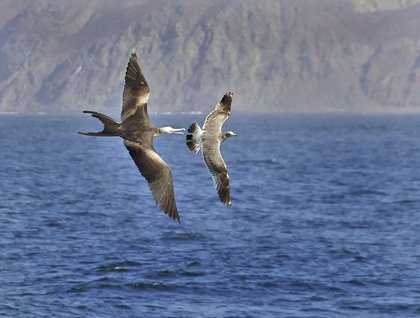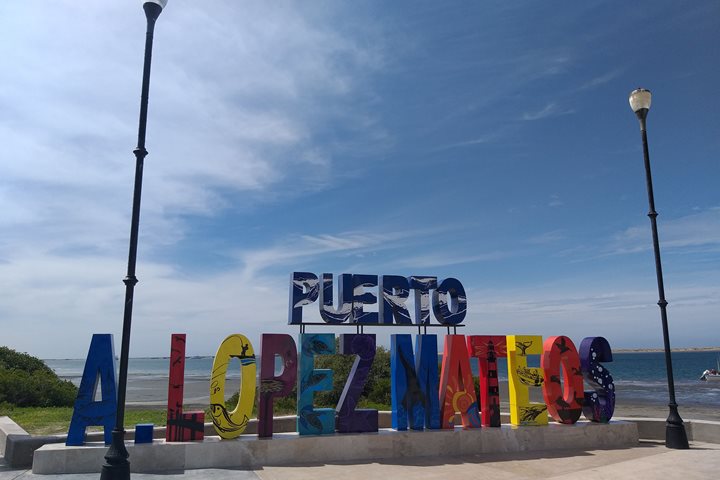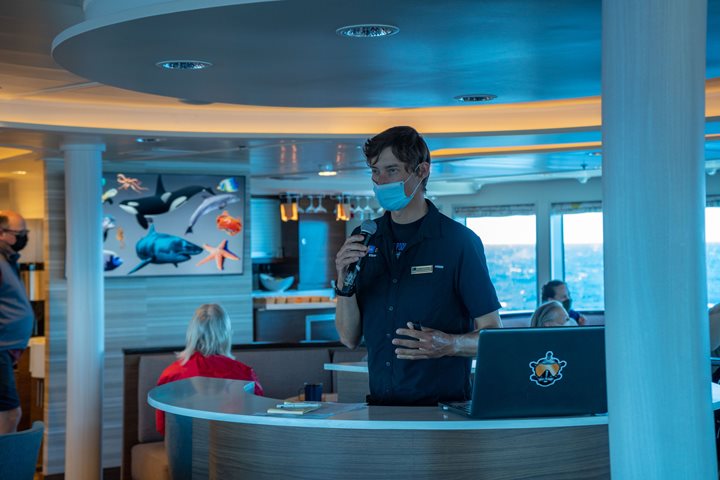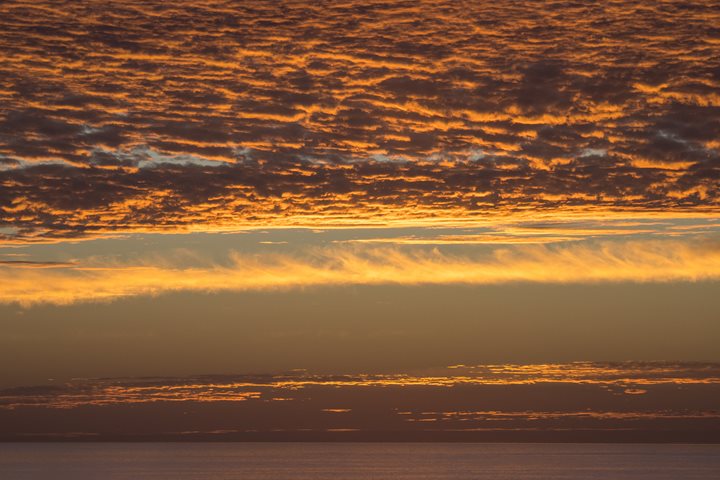No land appeared on the horizon as the National Geographic Sea Bird motored north through the open Pacific towards La Entrada, the entrance to the sheltered waters of Magdalena Bay and Boca de Soledad. We spotted black-vented and pink-footed shearwaters slicing through the air just above the water’s surface. Tiny phalaropes lifted off the waves in small flocks, looking much too diminutive to be in such a broad stretch of unprotected sea, yet they were quite at home. People on the bow discovered two humpbacks and a few dolphins when we drew closer to Isla Santa Margarita. One cluster of sea lions briefly picked up speed by porpoising to keep up with the ship. This form of travel can be more efficient, because air produces less friction than water. A sea turtle floated a short distance away. We could see its large head, big front flippers, and barnacles on its carapace before it dove into the depths. Frigatebirds drifted overhead, and we watched one in hot pursuit of a gull in an attempt for an easy meal (see photo). Half a dozen gray whale spouts greeted us within Magdalena Bay, our first experience with the creatures that would be the focus of our time for the remainder of our voyage. The pale gray backs rose slowly, and then one breached suddenly!
After an informative talk on geology and a tasty lunch, we returned to the decks to enjoy our passage through a narrow channel between Magdalena Island and the Baja Peninsula. The terrain varied from wind-formed dunes to a dense border of tangled mangroves. These salt-tolerant trees anchor the shifting sand and create a nutrient-rich environment for fish, invertebrates, and birds. Egrets, herons, and cormorants perched on the branches while godwits and curlews slept, waiting until the tide dropped to expose their feeding areas. On three occasions bottlenose dolphins raced towards the bow and caught the pressure wave for a free ride. By leaning out over the rail as in the photo, we could watch them weave back and forth with little effort as our vessel pushed them forward. The ship continued on past the community of Puerto Lopez Mateos. We maneuvered carefully through scattered cow/calf pairs of gray whales. It was a marvelous opportunity to observe and photograph these interesting cetaceans in such calm water.
The anchor chain noisily clanged through the hawse pipe in late afternoon when the ship reached Boca de Soledad at the northern tip of Magdalena Island. This would be our anchorage for the next two nights during our time in the world of the fascinating gray whales and while exploring the shore.
Our expedition landing craft shuttled us to a lovely beach for the late afternoon. It was not a long outing, but we had fun striding along where turret shells and Venus clams decorated the sand. Frigatebirds descended into the mangroves for the night, and long strings of cormorants stretched across the sky in their commute from a day of feeding. It was soon our turn to eat again with yummy snacks and a delicious dinner in the peaceful waters of Boca de Soledad, the “mouth of solitude.”







